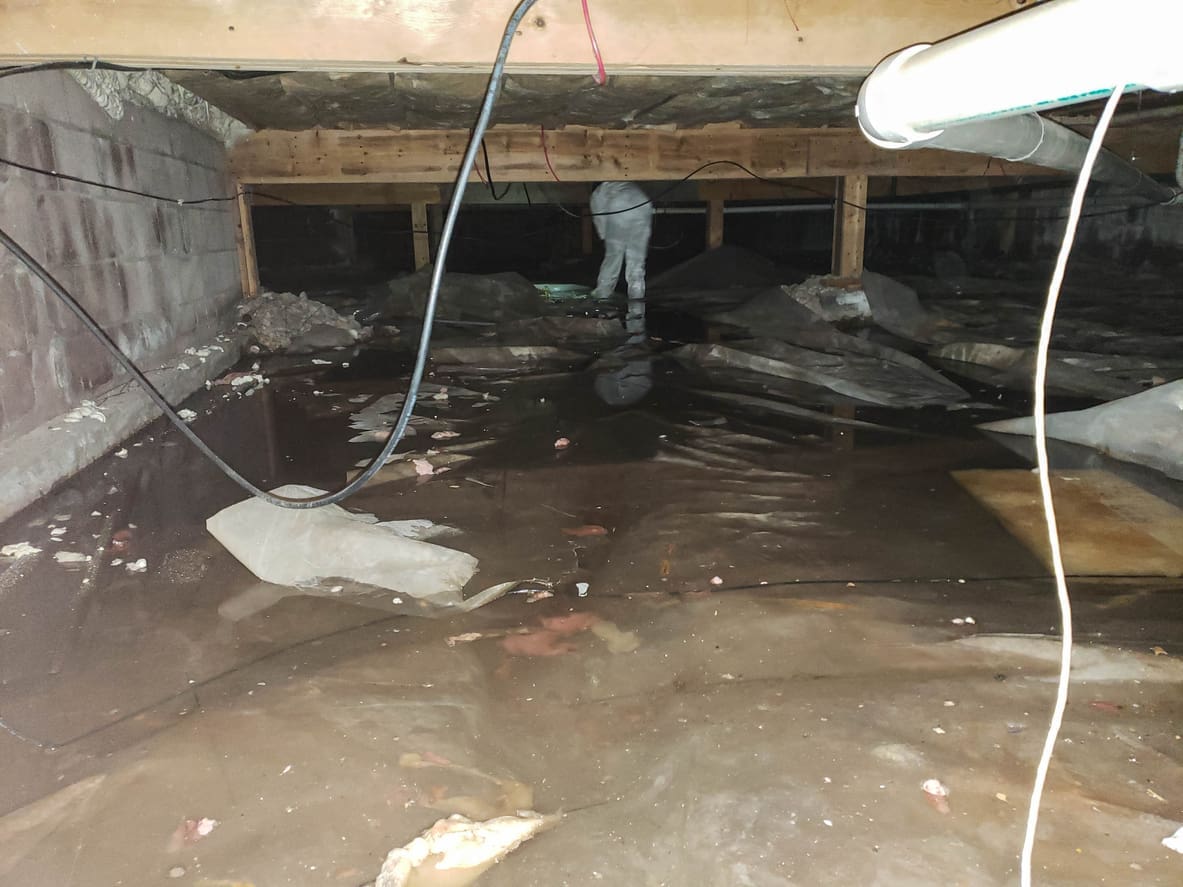Resources
Is It Bad If There’s Water in My Crawl Space?

Crawl spaces are often out of sight and consequently, out of mind for many homeowners. However, these areas play a crucial role in the overall health of your home. Unfortunately, they are also prone to moisture problems, including standing water. This begs the question: Is it bad if there’s water in your crawl space? Let’s delve into why water accumulation in your crawl space is a problem, its potential consequences, and effective solutions.
The Implications of Water in Your Crawl Space
Water in a crawl space can arise from several sources, including poor drainage around the foundation, leaks from plumbing lines, or simply due to the natural groundwater level. Whatever the source, the presence of water under your house can lead to several serious issues:
- Structural Damage: Moisture is the enemy of wooden structures, which are common in crawl spaces. Over time, water can weaken these structures, leading to sagging floors, cracked walls, and other structural problems that can be costly to repair.
- Mold and Mildew Growth: Crawl spaces with high humidity and standing water are breeding grounds for mold and mildew. These fungi not only damage the home but also pose health risks, especially to individuals with allergies or respiratory conditions.
- Increased Energy Costs: Humidity from a wet crawl space can permeate into the upper living areas, making your air conditioning system work harder to remove the moisture. This not only leads to higher energy bills but also reduces the comfort level of your living environment.
- Pest Infestations: A damp crawl space attracts pests such as termites, carpenter ants, and rodents. These pests can cause additional damage to your home and can be difficult to eradicate once they establish a presence.
Identifying the Presence of Water in Your Crawl Space
Before you can tackle the problem, it’s essential to recognize the signs that you have water in your crawl space:
- Musty odors emanating from the crawl space or lower levels of the house.
- Visible mold or mildew on the wooden surfaces and walls of the crawl space.
- Pooling or standing water under the house after heavy rains.
- Increased humidity levels inside the home, often accompanied by condensation on windows.
- Sagging or soft spots in your flooring, which may indicate rotting wood.
Preventative Measures and Solutions
The first step in solving any crawl space water issue is to stop the water from entering. Here are several strategies that can help:
- Proper Drainage: Ensure that your home’s gutters and downspouts are clear and directing water away from your foundation. Adding French drains around your home can also help redirect water.
- Sump Pump Installation: In areas with high groundwater levels, a sump pump can be an effective solution to remove water that accumulates in your crawl space.
- Vapor Barriers: Installing a vapor barrier can help reduce the amount of moisture that enters through the ground. This heavy-duty plastic sheeting covers the ground and part of the crawl space walls to block moisture.
- Encapsulation: This is a more comprehensive solution where the entire crawl space is sealed to control moisture. Encapsulation can dramatically reduce humidity and protect against water damage, mold growth, and pests.
- Dehumidifiers: For crawl spaces with persistent humidity issues, a dehumidifier can be installed to maintain a dry environment.
Regular Maintenance and Inspections
Regular inspections of your crawl space are crucial to catch and address moisture issues early. Look for any signs of moisture, check the condition of insulation and vapor barriers, and ensure that your sump pump (if installed) is functioning correctly. Regular maintenance not only prevents major repairs but also helps to keep the air quality in your home healthy and your living space comfortable.
When to Call the Professionals
While some homeowners may feel comfortable addressing minor crawl space issues, water accumulation often requires professional intervention. If you notice persistent water, mold growth, or structural issues, it’s advisable to call in the experts. Professional services can offer a thorough assessment and recommend the best solutions tailored to your specific situation.
Conclusion
Having water in your crawl space is indeed bad, but with the right approach, it can be managed and prevented. Addressing this issue not only protects your home’s structure and increases its value but also contributes to a healthier living environment. If you’re facing water issues in your crawl space, don’t wait for the damage to escalate. Contact Michigan Basements today for expert crawl space encapsulation and waterproofing services. Protect your home and ensure a safe, dry foundation for years to come.


